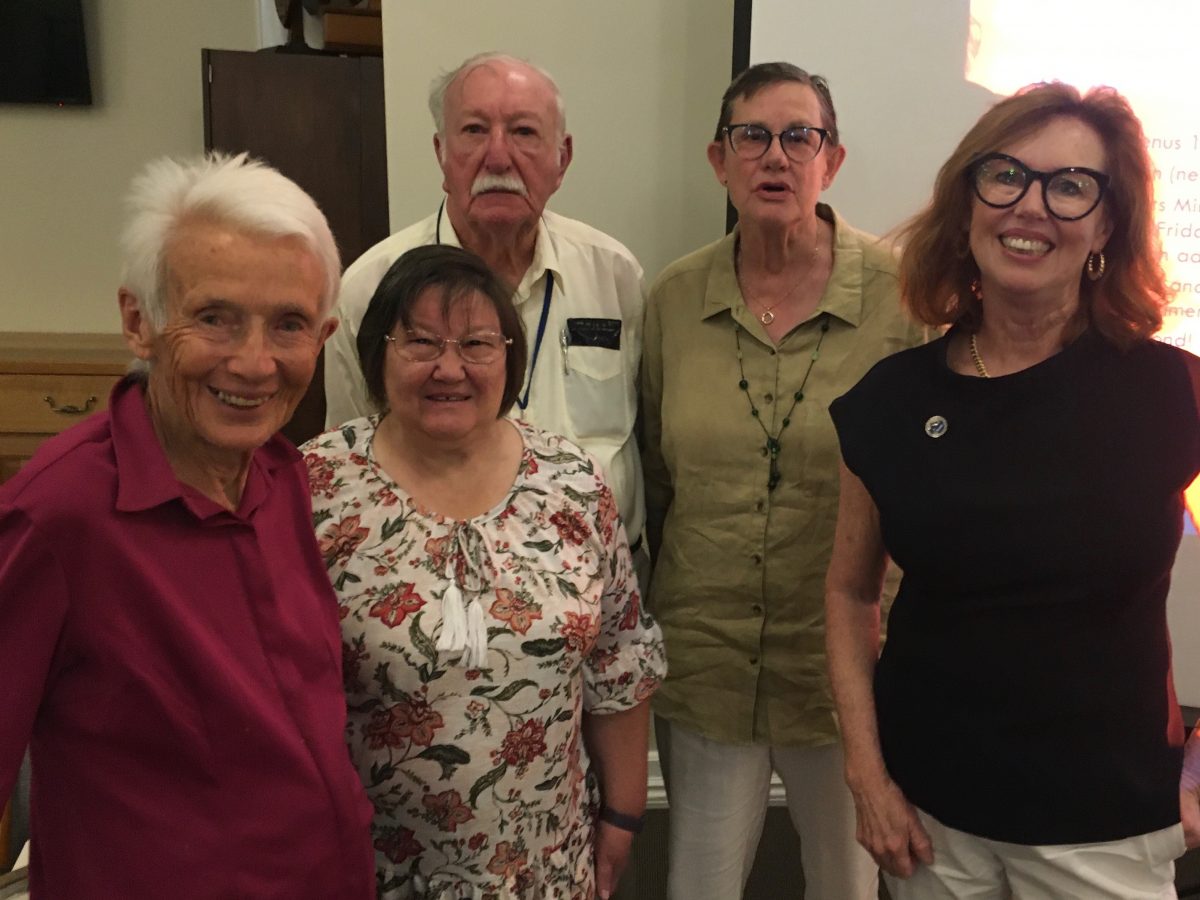
Frank and his daughter Miriam Chisholm and their modified car near the NSW-Queensland border where they documented a total solar eclipse in 1922. Miriam said the three-minute eclipse passed like a vivid dream. Photo: History Goulburn.
Having travelled from Goulburn to almost the NSW border with Queensland, the two young women and a man had not a minute to spare.
Under the shade of a tall gum tree, they set out their cameras, two telescopes, stopwatches and a white sheet on the ground.
Just after 3 pm, as the sky grew darker, curious cows surrounding them withdrew into the flat surrounding bushland. Aware something was going to happen, startled swallows and martins swooped and circled noisily above their heads and then suddenly and silently left.
“This was an experience I could not miss,” Miriam Chisholm, 21, had said of that total solar eclipse in September 1922. She had plotted an epic 965-kilometre journey from Kippilaw homestead near Goulburn with her father Frank, collecting her best friend Freda Tindal along the way.
Astronomers from around the world travelled by steamer, whaleboat, on camels and donkeys to strategic points across Australia to witness the eclipse. But according to Dr Toner Stevenson, an author, fellow eclipse chaser and honorary history affiliate at Sydney University where she manages the School of Humanities, Miriam’s observations best encapsulate what it was like to be there.
“The effect of the rapidly diminishing sunlight on the surrounding landscape was weird and uncanny,” Miriam wrote.
“The open trees and the glorious blue sky gradually became neutral, tinted and lifeless; then as the light faded, an ashen hue covered everything; all nature died and the grey light became her winding sheet.”
While researching several aspects of the 1922 total solar eclipse for Eclipse Chasers, a new book she co-wrote, Dr Stevenson drew on the archives of History Goulburn. She recently returned to Goulburn to recount Miriam Chisholm’s adventure.
She describes Miriam as a sporty woman, accomplished on horseback and a keen photographer with a sense of adventure. Miriam had attended Frensham boarding school where she met Freda Tindal, who joined the Chisholms on their northern journey at Glen Innes.
Miriam had organised the expedition from Kippilaw, the Chisholms’ homestead headquarters. Frank had modified his car, taking out one of the seats to make room for their equipment, all their food and plenty of water.

History Goulburn volunteers Jennifer Lamb, Helen Condylios, Bill Sommerville, Margaret Kendall and author Dr Toner Stevenson. Dr Stevenson co-wrote “Eclipse Chasers” with Professor Nick Lomb. Photo: John Thistleton.
Their Goondiwindi destination was on the line of totality (to see the Sun totally eclipsed by the Moon, you must be in the path of totality.) Drought had ravaged the countryside, but as they headed north, rain was falling. They were bogged near Styx River between Kempsey and Armidale during heavy storms, losing four days for an event where observations demanded they be in the right place at the right time.
As the 21 September deadline approached, it looked certain they would not arrive at their destination. They still had 22 kilometres to go.
“They knew they only had half an hour before the eclipse would start. They made a quick, smart decision to stop the car and found an observing site near the road with a clear view to the west,” Dr Stevenson said.
“They observed incredibly well. They drew pictures of the eclipse. They had a running sheet for all the planets listed to see and ticked them off: Mercury, Venus, Saturn and Jupiter,” Dr Stevenson said.
Freda drew the corona, which is the light around the edge of the Sun while Miriam and Frank viewed the event through telescopes, one on a tripod, the other fixed to the car’s windscreen. Miriam made special note of Bailey’s Beads, small “beads” of light shining through craters and valleys on the Moon as it totally covered the Sun. Her recollections were published two years later in Memoirs of the British Astronomical Association.
Eclipse Chasers ($39.99, CSIRO Publishing) will be released in March. The next total eclipse in Australia will be in April this year.







